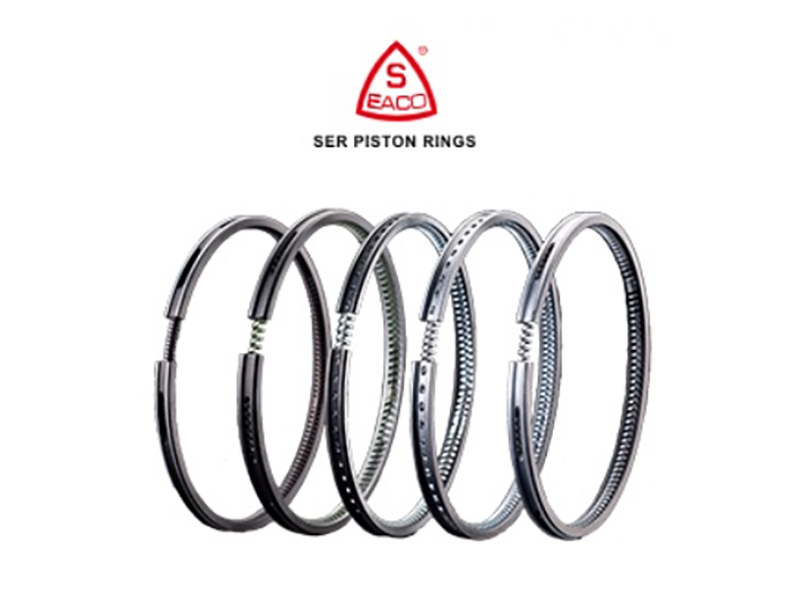2022-06-01
An Ultimate Guide to Piston Ring Compressor Maintenance In 2022

Did you know that piston ring compressors are one of the essential mechanisms in a piston ring compressor's development?
The piston ring compressor is worth its weight in gold among planes and other piston-driven machines. The role of the piston ring compressor, quite simply, is to keep all the parts of the engine running smoothly, from pistons to cylinders.
If a piston ring compressor malfunctions, it could lead to a severe health risk for any human nearby. Let's take a look at what makes a good piston ring compressor.
10 Most Important Maintaining Factors for Piston Ring Compressor
1. Know the Basic of Piston Ring Compressor
A Piston ring compressor is a unique tool that can install or remove piston rings. It is essential to know that piston ring compressor has two different types, and they are:
(1).Air Piston Ring Compressor
This piston ring compressor uses air pressure to compress the piston ring against the cylinder wall. This type of compressor is straightforward to use, and its performance is also better than other types. It has a meager cost too.
But there are some limitations of this type of compressor, such as it cannot be used for high-performance engines because it cannot provide enough power to compress the piston rings properly.
(2).Hydraulic Piston Ring Compressor
This piston ring compressor uses hydraulic power instead of air pressure to compress the piston rings against the cylinder wall.
This compressor provides more power than an air-powered compressor, which helps compress the rings correctly, but its cost is also higher than an air-powered compressor.
2. Understand the Compression Ratio
The compression ratio is one of the most important numbers on your engine. It tells you how much pressure is in your cylinder when the piston is at its highest point, called Top Dead Center (TDC).
The compression ratio is calculated by dividing the volume of air in the cylinder by its stroke volume. A higher compression ratio means more fuel and air can be packed into each cylinder, which means more power. But it also means that more heat energy is created during combustion, so you want to keep this number low enough so that your engine doesn't overheat.
3. Balance Your Pistons Before You Install It
Before installing your piston ring compressor, the next thing you should do is balance your pistons. This means making sure that all four pistons weigh the exact amount and work together seamlessly when installed in the engine block.
If one piston weighs more than another, it will throw off the weight balance of the entire engine block and could cause damage to other components inside it and slow down its performance overall.
Balancing these pistons should also be done regularly over time because as pistons wear down over time, they tend to lose weight, which means it's essential to keep checking their balance regularly. Hence, you know if any adjustments need to make.
4. Understand Ring Grooves
Piston rings are used to seal combustion pressure inside the cylinder walls during operation, preventing them from blowing out through the sides of the piston or leaking past valve stems into the crankcase.
They also help transfer heat from combustion gases into coolant passages where it can be carried away by water jackets surrounding each cylinder bore. The top ring is an oil control ring, while the bottom two rings are called compression rings because they compress against cylinder walls during operation to seal combustion pressures within the bore.
5. Determine Your Compression Height
To check your compression height, start by removing the spark plugs from the cylinders one time. Then, place your thumb over the opening and turn the crankshaft until it stops.
If there's resistance when turning the crankshaft, you have some compression in that cylinder, and the rings are still intact. If there's no resistance, all the oil has leaked out, and there's no compression in that cylinder.
6. Press Fit Factor Is Important To Consider
When it comes to piston ring compressors, the press-fit factor is significant when looking at a new one or an old one that needs to be serviced. Press-fit factors refer to the force required to compress a piston ring into its groove inside the cylinder wall.
The higher this number is, the more pressure will be on the metal from both ends of the tool until it reaches its proper position. The lower this number is, the less stress there will be on the metal from both ends of the device until its correct position.
7. Make Sure That You Are Not Over Compressing the Ring
It is essential to ensure that you are not over-compressing your piston ring, which can lead to damage. It would help if you used a feeler gauge to check how much pressure you are applying to the ring. The meter should slide between the rings on a flat surface without any resistance.
If it does not, you will need to reduce the pressure being applied by either backing off your pressure wrench or using another method of applying pressure.
8. Use Clean Compression Tools
Make sure that you use clean compression tools when working with pistons and rings. It is worth taking extra time to clean off your devices before moving on to another part of your engine rebuild so that you do not contaminate other areas with oil or grease residue from the previous positions that were worked on by other mechanics or enthusiasts who have been working on their engines before they arrived at your shop for repair or rebuilding services.
9. Do Not Use a Cheap Ring Compressor
The first thing that comes to mind when anyone thinks about piston ring compressors is Harbor Freight tools. These cheap tools seem like great deals because they are affordable and can be found at almost any hardware or auto parts store.
However, these tools are not meant for professional use and should never be used by professionals. They have no warranty, which means if something goes wrong with them during service, then there is nothing you can do or get back from the manufacturer or retailer that sold them to you in the first place.
Also, if they break during use, there's no way to get parts for them either – they only sell replacement parts if they die during shipping or manufacturing defects (which is rare).
10. Store Your Piston Ring Compressor Carefully
After using your compressor, it's essential to store it properly so that it doesn't get damaged or lose any of its functionality.
The first thing you should do is unplug the motor when you're finished using it. This will keep it from accidentally turning on while you're storing it and possibly damaging itself. Next, make sure all valves are closed, and then let the unit cool down before putting it away.
You should never store your piston ring compressor while it's still hot because this can lead to severe damage or injuries if anyone touches it while it's hot enough to burn skin.
Summing Up!
To minimize the risk of a piston ring compressor breakdown, we suggest you follow the manufacturer's instructions for lubrication, inspect components regularly and replace any broken parts.
By doing this, you can ensure your piston ring, and its compressor is maintained in peak performance and avoid costly repairs in 2022.
Overall, piston ring compressor maintenance is essential to ensuring the continued smooth performance of your piston ring compressor. Put these maintenance practices into place; they'll do wonders for the longevity and reliability of your machine
SEACO INTERNATIONAL CO., LTD.
TEL : 886-4-23305411
FAX : 886-4-23305423
No.51, Bei’an Rd., Wufeng Dist., Taichung City 41358, Taiwan
